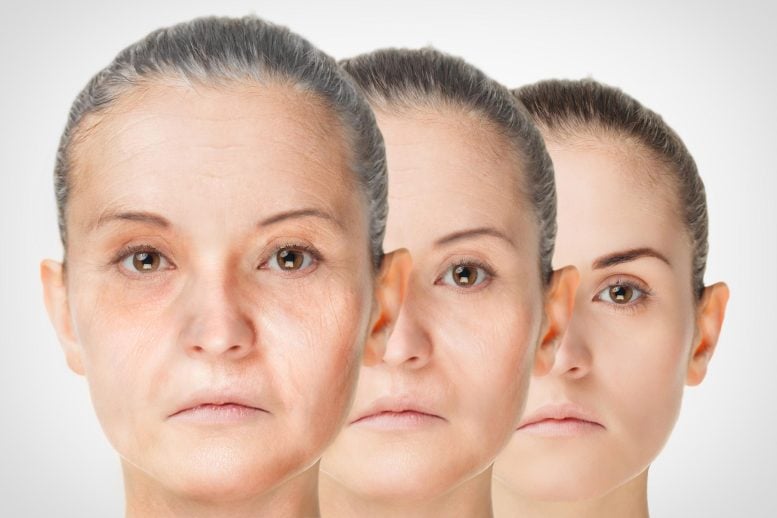Chiral (adjective, “KY-rul”)
A chiral molecule is one that comes in a left- and right-handed form. If a molecule is chiral, it cannot be placed over its mirror image in a way that matches perfectly.
To understand this, we need only look at our own hands. Hands are chiral. They come in a left- and right-handed form. These forms are mirror images of each other. (Place your palms together, and your fingers will align — thumbs touching thumbs, for example.) But when the left and right hand are facing the same direction, one cannot be placed over the other in a way that matches perfectly.
You can try this yourself, or with a friend. Turn both hands palm up. Try to move your upward-facing right hand behind the upward-facing left hand. There is no way to align your upward-facing hands so that your thumbs are on top of each other. This is chirality.
 Water molecules, like the one illustrated here, are achiral. That means a water molecule perfectly matches its own mirror image.ALI DAMOUH/SCIENCE PHOTO LIBRARY/Getty Images
Water molecules, like the one illustrated here, are achiral. That means a water molecule perfectly matches its own mirror image.ALI DAMOUH/SCIENCE PHOTO LIBRARY/Getty Images
Some molecules, such as water (H2O), do perfectly fit their mirror images. These molecules are called achiral. Imagine a water molecule facing its reflection in a mirror. If you moved the water molecule over its reflection, the two could overlay perfectly. In other words, a water molecule could superimpose its mirror image.
Chirality is important in chemistry because it affects how molecules interact. Consider drug chemistry. Left- and right-handed forms of a drug molecule may affect the body in very different ways. So a chemist must know which form they are creating.
Chirality is also important in biology. Here’s an example. Living things make amino acids, which combine to form larger protein molecules. Amino acids come in a left- and right-handed form. Yet almost all living things on Earth make and use only the left-hand form. The reason why remains a scientific mystery.
However, scientists recently studied amino acids that formed in space. In an asteroid, they found equal amounts of left- and right-handed forms. These amino acids were probably not formed by living things. That’s why there was no selection for the left-handed form.
In a sentence
Scientists developed chiral sound-dampening fabrics by twisting the connecting links in long molecules.







.jpg.webp?itok=1zl_MpKg)





 Bengali (Bangladesh) ·
Bengali (Bangladesh) ·  English (United States) ·
English (United States) ·